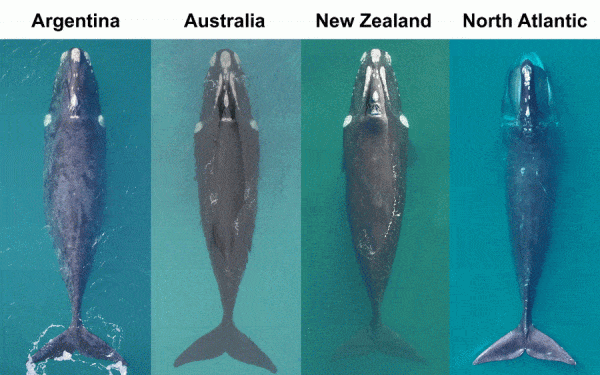New research by an international team of scientists reveals that endangered North Atlantic right whales are in much poorer body condition than their counterparts in the southern hemisphere. The alarming results from this research, led by AIAS Fellow Fredrik Christiansen, were published this week in the journal 'Marine Ecology Progress Series'.
Since large-scale commercial whaling stopped in the last century, most populations of southern right whales have recovered well, and now there are about 10,000 - 15,000 right whales in the southern hemisphere. Unfortunately, the same cannot be said for the North Atlantic right whales, found today off the east coast of North America. There are only around 410 individuals left, and the species is heading to extinction.
A number of known challenges cause the dissimilar and unfortunate development of the two different whale populations: Lethal vessel strikes and entanglement in fishing gear continue to kill and harm the North Atlantic right whales. Individual North Atlantic right whales also have to deal with frequent entanglements in fishing gear, in particular lobster and crab pots, which drains their energy. These burdens, along with a change in the abundance and distribution of their main source of food, copepods and krill, have left the whales thin and unhealthy, which makes them less likely to have a calf.
Read more at Aarhus University
Photo: Healthy southern right whales from three populations (left three photographs) next to a much leaner North Atlantic right whale (right) in visibly poorer body condition. CREDITS: Fredrik Christiansen (left & center-left), Stephen M. Dawson (center-right), John W. Durban and Holly Fearnbach (right).


